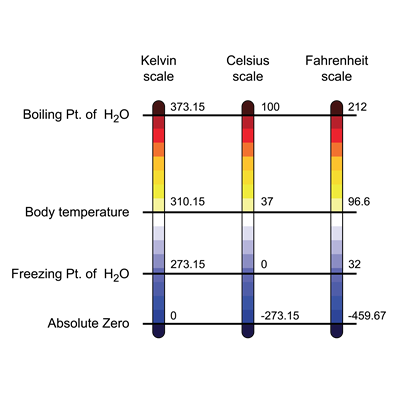PDF chapter test TRY NOW
I hope you might have studied various scales of measurement for measuring temperature. Here, we are going to see a brief outline of where the scales are used practically to measure the temperature of a region.
There are three main scales commonly used in the world today to measure the temperature of a unit volume of air at a given time: The Fahrenheit (°F) scale, the Celsius (°C) scale, and the Kelvin (K) scale.
There are three main scales commonly used in the world today to measure the temperature of a unit volume of air at a given time: The Fahrenheit (°F) scale, the Celsius (°C) scale, and the Kelvin (K) scale.

Meteorologist uses Thermometer, Stevenson screen and minimum and maximum Thermometer to measure temperature.
There is a heat budget which is a balance between the insolation and outgoing radiation. As we discussed earlier, outgoing radiation heats the atmosphere compared to that of insolation, and the maximum temperature is recorded between 2 to 4 pm when there is maximum outgoing radiation. In the same manner, the minimum temperature is recorded around 4 am before sunrise.
Mean Temperature
The weather and climate community by convention calculates the observed daily mean temperature by summing the maximum and minimum instantaneous temperatures during a 24-hour period and dividing it by two.Daily mean temperature = (Max. Temperature of a day + Min temperature of a day)/2
Example:
Maximum temperature of a day = 87°F
Minimum temperature of a day = 73°F
[(87°F+73°F)/2=80°F]
Daily mean temperature = 80°F
Diurnal range of temperature
The diurnal range of temperature is the difference between the maximum and minimum temperatures of the same day. It generally increases with distance from the sea and towards those places where solar radiation is strongest.
Diurnal range of temperature = Max. temperature of a day - Min temperature of a day
Example:
In a day, say max is 37°C and min is 20°C, then 17°C is the diurnal range.
i.e. 37°C - 20°C = 17°C
The annual range of temperature is defined as the difference between the hottest and coldest months, taking monthly mean temperatures in each case.
Annual range of temperature
Anual range of temperature = Highest mean monthly temperature of a year - Lowest mean monthly temperature of a year
Example:
The max. average temperature at Madurai is 35°C and min. average temperature is 20°C. Hence, the annual range of temperature at Madurai is 15°C.
Isotherms are used to show the distribution of temperature. Isotherms are imaginary lines that connect the same temperatures of different places.
